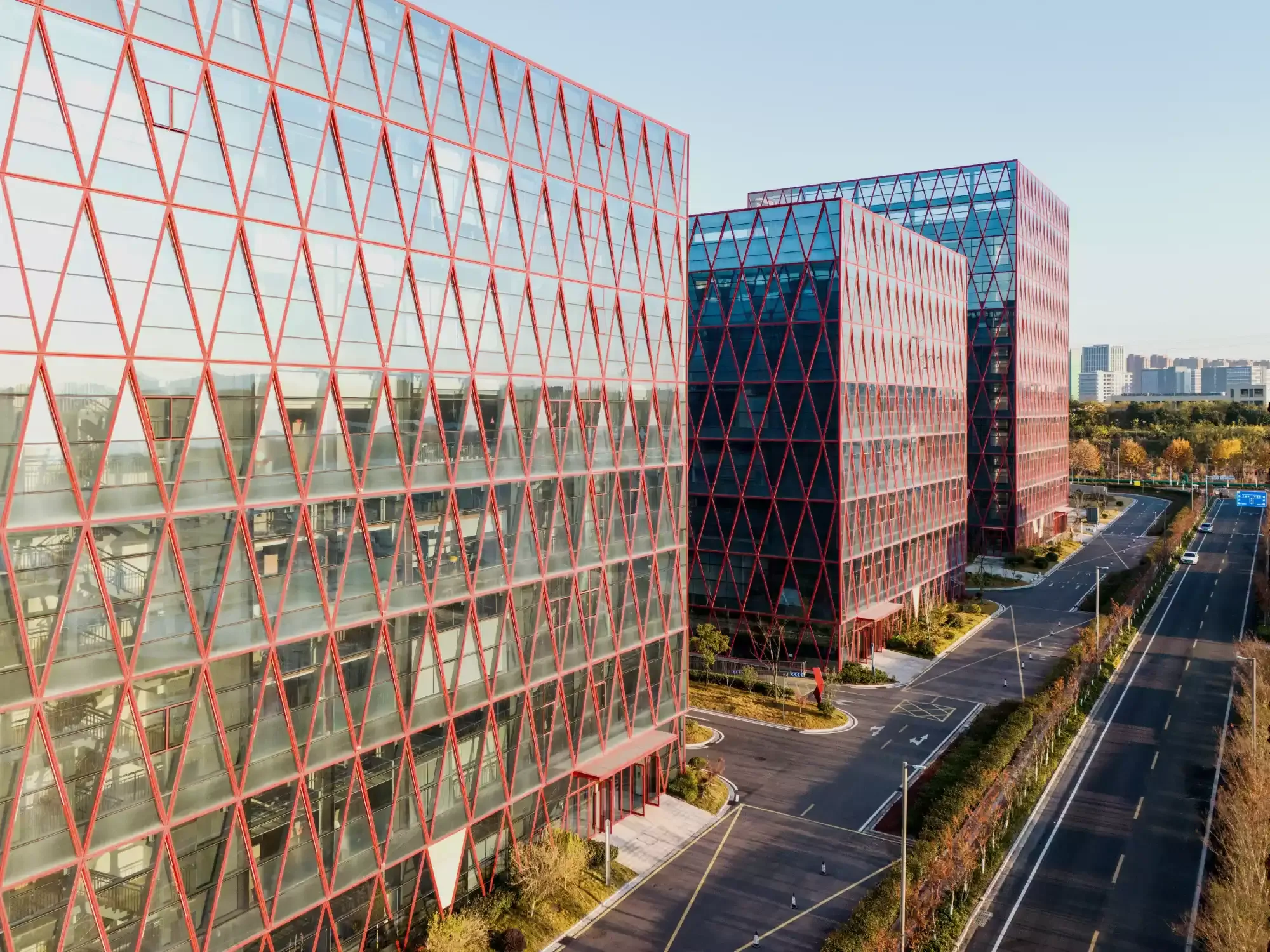Services
SERVICES
SOLUTIONS
TECHNOLOGIES
Industries
Insights
TRENDING TOPICS
INDUSTRY-RELATED TOPICS
OUR EXPERTS

July 8, 2025
Due to the globally increasing number of internet users, business operations’ digitalization, and the proliferation of smartphones and IoT devices, data volumes are growing exponentially. When data sets become too large or complex to be managed using traditional tools and techniques, they are considered big data. Big data can provide comprehensive, real-time insights that help companies drive meaningful innovation and effective business growth.
| It is predicted that the total volume of data produced, recorded, transferred, and used worldwide will reach 394 zettabytes in 2028, up from 149 zettabytes in 2024 | |
|---|---|
| 90% of the world’s data is thought to have been created in the last two years alone | |
| Over 18 billion text messages are estimated to be sent daily worldwide | |
| Unstructured datasets make up 90% of all enterprise-generated data and are usually large, reaching terabytes or petabytes | |
| The volume of data that large enterprises gather and store is expected to increase tenfold every year, with about 90% of that data being either unused or not properly utilized |
| More than 75% of businesses stated that they were using data to drive innovation, and 50% believed that their companies gained a competitive advantage thanks to data and analytics | |
|---|---|
| Among advanced digital technologies, big data ranks third, with a 37% adoption rate in the UK, following cloud computing and AI |
Scheme title: Motivations to adopt big data
Data source: The University of Manchester
Scheme title: Barriers to adopting big data
Data source: The University of Manchester
Scheme title: The impact of adopting big data
Data source: The University of Manchester
The global big data market and its related segments, such as big data analytics and engineering services and dedicated platforms, are expected to grow in the upcoming years, driven by such factors as the increased need for data-driven decision-making and the expansion of cloud computing.
| The global big data market is forecasted to grow from $262.87 billion in 2024 to $1,019 billion by 2035 at a compound annual growth rate (CAGR) of 13.10% from 2024–2035 | |
|---|---|
| The software segment of the worldwide big data market is predicted to grow at the fastest rate compared to hardware and services segments | |
| The software component of the big data market is estimated to have a 65.34% market share by 2035 and show a CAGR of about 14.78% from 2024–2035 | |
| The big data industry analysis predicts that cloud big data solutions will hold a 70.65% share of the global big data market from 2024–2035 | |
| Large enterprises are believed to be the major adopters of big data, with a 60.34% share of the big data market, while big data adoption by small and medium enterprises is projected to grow faster at a CAGR of 15.25% until 2035 | |
| According to regional analysis of big data markets, North America presently holds a dominant 37.69% of the overall market share |
| The global big data analytics market was worth $348.21 billion in 2024 and is expected to reach $961.89 billion by 2032 | |
|---|---|
| The global big data analytics market is forecasted to expand, exhibiting a CAGR of 13.5% from 2024 to 2032 | |
| Analysts forecast that by area of application, the advanced analytics segment of the global big data market will hold the largest market share of over 68.56% by the next decade, while the data discovery and visualization segment is anticipated to demonstrate the fastest CAGR of about 15.98% | |
| By type of technology, the analytics segment of the global big data market is projected to lead with a market share of 55.65% by 2035, while the visualization segment is anticipated to experience the highest CAGR of approximately 14.67% from 2024 to 2035 |
Scheme title: The largest and fastest-growing big data analytics markets
Data source: SkyQuest Technology Consulting
| The big data analytics market in North America is valued at $113.54 billion |
|---|
Scheme title: The market share of the top 5 big data analytics providers (Microsoft Corporation, IBM
Corporation, Oracle Corporation, SAP SE, SAS Institute Inc.) against other players
Data source: Fortune Business Insights
| The big data and analytics services market is forecasted to expand to $365.42 billion in 2029, exhibiting a CAGR of 21.3% |
|---|
| The market for big data engineering services is projected to be worth $91.54 billion in 2025 and grow at a CAGR of 15.38% to reach $187.19 billion by 2030 |
|---|
Scheme title: Big data engineering services market growth by region
Data source: Mordor Intelligence
| With a CAGR of 9.3% from 2026 to 2033, the big data platform market is projected to reach $151.2 billion by 2033, up from $68.09 billion in 2024 | |
|---|---|
| With a market share of 38%, North America dominates the big data platform market, followed by Europe (27%), and Asia Pacific (23%) | |
| Cloud-based solutions account for 68% of the big data platform market, while on-premises solutions make up 32% |
Scheme title: The value of the big data consulting market in 2025 and 2030
Data source: Mordor Intelligence
| The market for big data consulting is expected to grow at a 13.6% CAGR between 2025 and 2030 |
|---|
Scheme title: Big data consulting market growth by region
Data source: Mordor Intelligence
Companies are increasingly applying advanced technologies like cloud, artificial intelligence, and machine learning to further streamline big data processing. While AI algorithms facilitate real-time data analysis, predictive analytics, and automation of decision-making processes, cloud big data solutions can provide accelerated software deployment and greater scalability. However, as companies embrace technological advancements, data analysts are pushed to expand their skill sets to work with big data.
At the same time, as big data analytics platforms collect large volumes of information, including sensitive data, data protection and fraud detection will come to the forefront of big data projects. Businesses will be required to develop stricter data governance frameworks and ensure compliance with data security regulations like GDPR or HIPAA.
| 48% of companies employ AI for effective big data management | |
|---|---|
| The value of the global AI in big data analytics and IoT market is anticipated to increase from $77.2 billion in 2023 to $519.4 billion by 2033 | |
| The global AI in big data analytics and IoT market is forecasted to exhibit a CAGR of 21% between 2024 and 2033 |
Scheme title: Global AI in big data analytics & IoT market value and growth
Data source: Market.Us
| North America holds the biggest share of the global AI in big data analytics and IoT market, taking up 40% of the market due to its advanced technological infrastructure and early adoption of AI in big data analytics | |
|---|---|
| Machine learning is the most prevalent type of technology used within the global AI in big data analytics and IoT market, with a market share of 37.5% |
| Around 45% of businesses deploy cloud technologies to facilitate big data processing and optimize workloads | |
|---|---|
| As of 2025, 51% of businesses said they chose public clouds for data storage | |
| According to a poll conducted in 2025, 62% of SMBs said they kept data in the public cloud | |
| The global big data as a service (BDaaS) market is predicted to increase from $39.46 billion in 2025 to $198.9 billion in 2034, demonstrating a CAGR of 19.62% during this period |
Scheme title: Market share of big data as a service by region
Data source: Precedence Research
| The North American BDaaS market was valued at $11.88 billion in 2024 and is projected to expand at a CAGR of 19.78% from 2025–2034 | |
|---|---|
| In 2024, 64% of the BDaaS market was held by the public cloud segment, being the largest one by deployment | |
| Large enterprises are the main BDaaS adopters, while small and medium-sized businesses are projected to adopt BDaaS at the highest CAGR from 2025–2034 |
| Data scientist will be among the top 4 fastest-growing occupations between 2023–2033 | |
|---|---|
| A data scientist earns a median salary of $112,590 per year | |
| Data scientists are expected to see a 36% increase in employment between 2023 and 2033, which is significantly higher than the average for all occupations | |
| Employers around the world say that the most crucial skills are big data and AI |
Scheme title: Big data and AI seen as core skills for 2025–2030 by employers worldwide
Data source: Statista
| The potential for data privacy breaches and security vulnerabilities is among the top concerns related to big data | |
|---|---|
| The global average cost of a data breach reached $4.9 million in 2024, a 10% increase over the previous year and the highest total ever | |
| The most expensive data breaches happen with data stored in public clouds, reaching $5.17 million | |
| The global big data security market is expected to increase from $27.4 billion in 2025 to $83.95 billion by 2032, growing at a CAGR of 17.3% during the forecasted period | |
| In 2024, North America dominated the big data security market and achieved a market value of $8.84 billion |
Scheme title: The growth rate of the big data security market by region
Data source: Mordor Intelligence
Scheme title: Solutions used for big data security
Data source: Pro Market Reports
The adoption rate of big data varies across industries, with logistics showing the highest CAGR and value growth among other industries from 2023–2032. By operational area, marketing and sales as well as workforce management are the most notable segments as per market share and growth rate.
| Global big data market analysis indicates that by business function, the marketing and sales segment will take up the largest share of around 50.78% of the big data technologies market, while the human resources segment will grow at the fastest rate from 2024–2035, at about 14.94% |
|---|
Scheme title: Adoption of AI and big data across sectors in 2025
Data source: Statista
Scheme title: The percentage of employers across different industries considering AI and big data to be
core skills from 2025–2030
Data source: Statista
| The healthcare and pharmaceutical segment of the global big data market is anticipated to increase at a CAGR of about 15.67% from 2024–2035 | |
|---|---|
| The market for big data analytics in healthcare is projected to double in value, growing from $37.22 billion in 2024 to $74.82 billion in 2032 |
| The market for big data analytics in retail is expected to grow around three times in value, reaching $20.22 billion by 2030, up from $7.73 billion in 2025 | |
|---|---|
| The CAGR at which the big data analytics market in retail will grow is forecasted to be 21.2% from 2025–2030 |
| It’s expected that by 2035, the banking, financial services, and insurance (BFSI) market will have a dominant 35.65% share of the global big data market | |
|---|---|
| By 2030, the big data analytics in banking market is projected to grow to $29.87 billion, up from $10.56 billion in 2025 |
Scheme title: The growth of big data analytics in the banking market by region
Data source: Mordor Intelligence
Scheme title: The growth of the global market for big data in the automotive industry
Data source: Spherical Insights
| The market for big data in the automotive sector is anticipated to expand at a CAGR of 16.15% between 2023 and 2033 | |
|---|---|
| Europe is anticipated to lead with the largest share of the big data in the automotive industry market from 2023–2033 |
| The size of the global market for big data in manufacturing is expected to increase from $6.52 billion in 2024 to $16.74 billion in 2032 | |
|---|---|
| The global big data in manufacturing market is expected to expand at a CAGR of 12.5% from 2025 to 2032 |
Scheme title: The largest and fastest-growing markets of big data in the manufacturing industry
Data source: SkyQuest Technology Consulting
| 45% of the growth of big data in the manufacturing industry market from 2025–2032 is predicted to be driven by the North American region |
|---|
| The size of the big data market in logistics was valued at $4.3 billion in 2023 and is estimated to reach $24.1 billion in 2032, growing more than five times during the forecasted period | |
|---|---|
| The big data in the logistics market is poised for growth at a CAGR of 21.5% | |
| The software segment of the big data in the logistics market accounted for a market share of over 51% in 2023, followed by the hardware and services segments |
Scheme title: The share of cloud-based and on-premises big data solutions in the logistics market
Data source: Global Market Insights
| The cloud-based segment of the big data in the logistics market is predicted to be worth more than $18.6 billion by 2032 |
|---|
| The market for big data analytics in construction was worth $8.4 billion in 2023 and will have an estimated value of $21.7 billion in 2032, demonstrating a 2.5 times increase in value | |
|---|---|
| The market for big data analytics in construction is forecasted to expand at a CAGR of more than 11% from 2024 to 2032 | |
| Based on components, the solution and services segments accounted for more than 70% and less than 30% of the big data analytics in construction market, respectively, in 2023 | |
| The project management segment of the market for big data analytics in construction is predicted to reach $5.4 billion by 2032 | |
| Microsoft and IBM control more than 12% of the big data analytics in the construction market, securing a dominant position |
We help companies extract value from large volumes of data to make informed decisions, enhance customer experiences, and improve revenue.

Our data engineers develop a holistic big data strategy tailored to your business needs and help bring it to life.
Itransition offers big data implementation services, setting up the right technologies, processes, and infrastructure to help businesses turn their big data into useful insights.
With data being extremely important for decision-making, businesses will continue to implement Internet of Things, business intelligence, analytics tools, and big data technologies to collect and use as much information as possible from diverse data sources.
However, implementing big data solutions can be challenging due to the need to handle diverse data types and formats while ensuring their robust security. That’s where partnering with a trusted big data company like Itransition becomes essential for properly capturing and turning big data into actionable insights.

Service
Itransition offers big data analytics services, implementing solutions for extracting insights from vast and complex datasets to support decision-making.

Insights
Learn about OLAP in a data warehouse and what operations it supports, a typical system architecture featuring OLAP, types of OLAP systems, and OLAP benefits.

Service
Itransition offers full-scale data analytics services to help companies turn raw data into actionable business insights, fostering informed decision-making.

Insights
Explore real-time big data analytics, its architecture and applications, as well as real-time big data analytics adoption challenges and steps to overcome them.

Service
Rely on Itransition's data science consulting services and holistic tech expertise to turn data into value for your business.

Insights
Review the anatomy of big data governance and learn why it’s an essential component of any big data strategy.